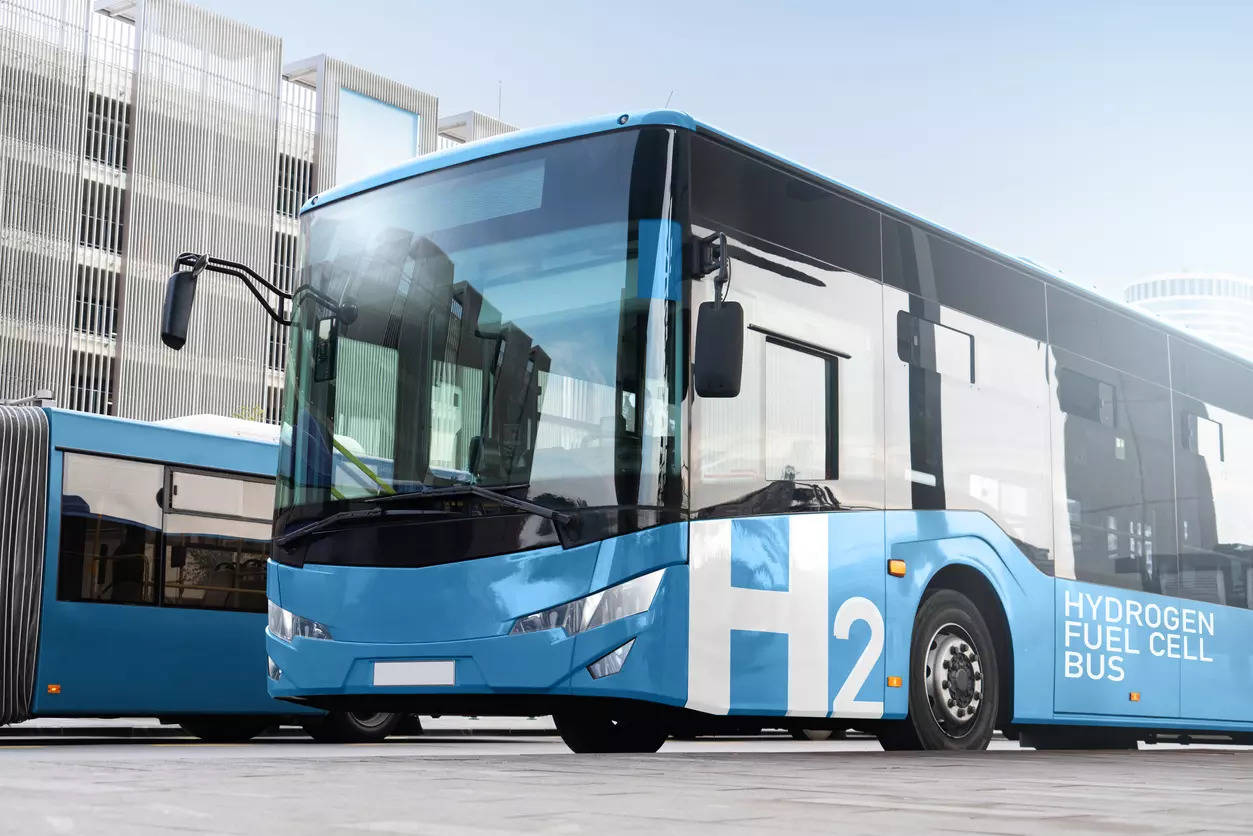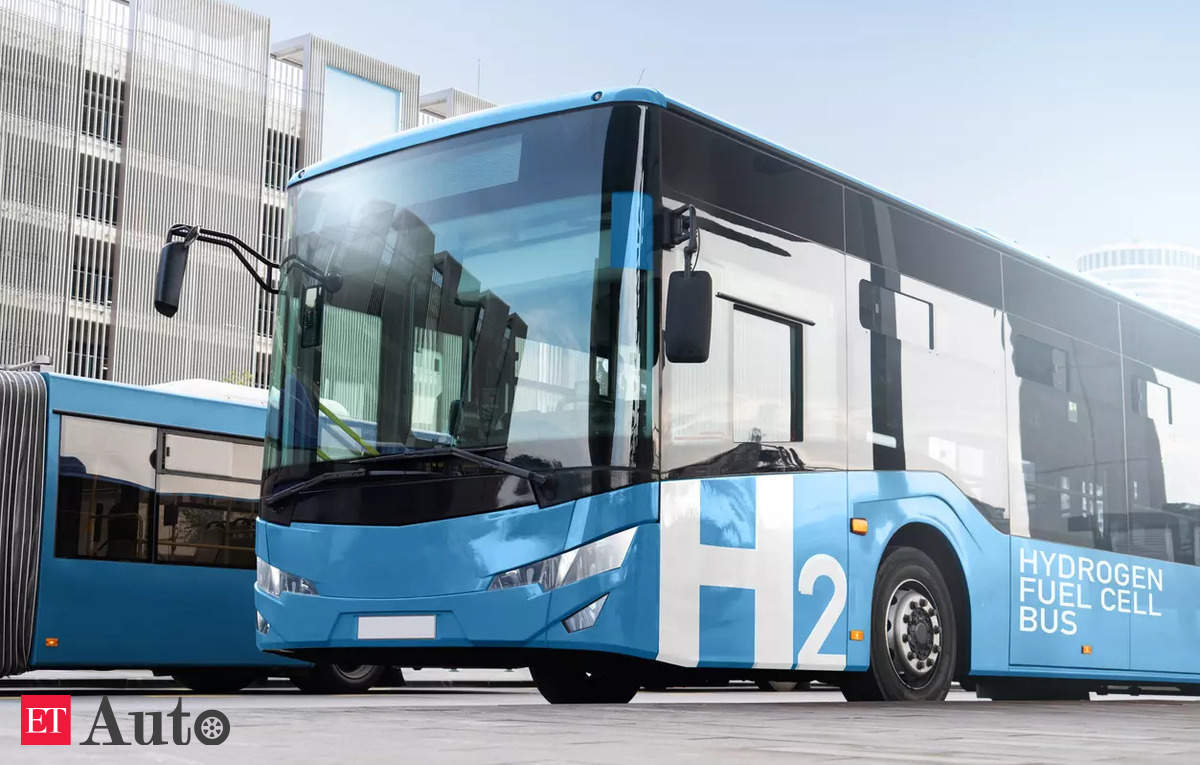
India aspires to be energy-independent by 2047, the centenary year of its freedom. This entails a promising multiple fuels policy and ambitious targets for electric vehicles as well as ethanol blending in petrol and biodiesel. The recent launch of hydrogen buses or Fuel Cell Electric Vehicles (FCEVs) by Union Minister Hardeep Singh Puri further strengthens India’s vision of energy security. In order to achieve the net-zero target by 2070, almost 95 per cent of road freight must move to electric and/or hydrogen. In this article, we calculate the potential of hydrogen in India’s mobility sector and how it can learn from the electric vehicle (EV) roll-out.Not just India, but the world is also rapidly experimenting with hydrogen in mobility. Europe is planning 1,200 hydrogen buses and 150 hydrogen trucks by 2025 under various schemes. In Asia, China is leading deployment and plans to add 50,000 fuel-cell electric vehicle (FCEVs) by 2025 using heavy national incentives and state policy support. South Korea and Japan aren’t far behind with targets for hydrogen cars and buses.
There is an opportunity here for India’s National Green Hydrogen Mission, which targets the production of 5 million metric tonnes of green hydrogen per year by 2030. Beyond mobility, hydrogen could find potential use in refineries, fertilisers, city gas sectors, steel production and shipping.
Is there substantial potential for FCEVs in the mobility sector?
EVs have achieved cost and functional parity for small and light commercial vehicles such as three-wheelers in passenger and freight segments, but the heavy-duty sector remains a concern. Road freight accounts for 35-40 per cent of India’s total on-road carbon emissions, using up 25 per cent of the oil imports.
While the recently launched PM-ebus Sewa focuses on urban areas, 80 per cent of India’s overall bus market caters to long-route travel, mostly driven by private operators. E-buses have found negligible entry in this market. Hydrogen bus technology could substantially cater to this largely untapped market in a few years.
But more importantly, hydrogen bus trials will pave the way for the trucking sector and zero-emission trucks. CEEW analysis suggests that the freight sector will grow by almost five times by 2050 with economic growth. Trucks cater to multiple businesses, locations and commodities with no set routes. Thus, longer-range, higher-payload capacity and quicker refueling are integral to lower logistics costs of their options. Such freight patterns necessitate the need for FCEV technologies. The hydrogen transition in freight will result in substantial savings in fuel import bills, greenhouse gas emissions, and air pollutants. FCEVs save almost 40-60 per cent more on routes with intense cooling or heating requirements and varying loads in the vehicles.
Alleviating barriers to fast-track hydrogen technology adoption
For these ambitious plans to be actioned, there are three critical barriers to be addressed.
First, diversified and indigenous value chains are critical for hydrogen technology to reach commercialisation. To catalyse the adoption of FCEVs, secure the supply chain both of the fuel and the critical minerals required. The cost of producing green hydrogen can be reduced by almost 35-55 per cent by 2030. Platinum and Lithium are the most important minerals for hydrogen fuel cells and electrolyser technologies. As a rare metal, almost 70 per cent of platinum is produced in South Africa followed by Russia (16 per cent). This makes it necessary to foster international collaboration to secure supply chains. India’s leadership through the G20 Presidency to include the African Union as a member can be leveraged to strengthen business ties. Additionally, the inclusion of Platinum Group Elements (PGE) by the Ministry of Mines for exploration in India will further facilitate domestic production.
Second, the nascent hydrogen technology must learn from India’s EV transition and leapfrog. India’s EV transition with the national e-bus programme for 50,000 e-buses and the FAME scheme for electric two-wheelers and three-wheelers is built on fiscal incentives and robust charging infrastructure. FCEVs must create a similar set of demand and supply strategies. Large-scale deployments must be planned in high-density freight and passenger routes and regions such as mega-city urban agglomerations. Regional hubs of FCEVs in the early phase will reduce the need for vast hydrogen refueling networks later on. Key manufacturers like Tata Motors and Ashok Leyland have already stepped up research and development of fuel-cell vehicle models. Stringent fuel efficiency standards in Heavy Duty Vehicles (HDVs) can further fast-track commercial production of the zero-emission trucking ecosystem.
Third, optimal deployment of refueling infrastructure. The high upfront costs of setting up a hydrogen supply infrastructure necessitate proper planning for deploying refueling stations. This holds even greater significance in the extremely cost-sensitive passenger and freighter market in India. The Ministry of Road Transport and Highways will also enable the adoption of hydrogen in the transport sector through regulations, testing facilities, pilot projects, and infrastructure development. Pilots must be conducted to gauge the performance of FCEVs in various driving cycles, weather and terrain conditions to collect robust operational data. This would further facilitate robust refuelling infrastructure planning. Fuel cell vehicles and hydrogen refueling stations require economies of scale for lower costs, advance planning for preventive maintenance, and the inclusion of certification and training efforts. Practitioners highlight high variance in hydrogen pricing over the project period as a key deal-breaker. Pilots must guarantee long-term fixed prices and a high-quality stable hydrogen supply.
We estimate a large potential market for 1.5-2 lakh long-haul buses and trucks annually in India, along with relevant fuel production and supply. The FCEV bus pilots initiated by the government will nudge the market, and drive innovation in the long-haul and heavy-duty mobility, especially the trucking sector. Early efforts to secure the rare materials supply chains and R&D investments in hydrogen refuelling technology will fast-track its adoption. This is a critical step to fast-track India’s long-term energy security and amplify its efforts to achieve net zero.









